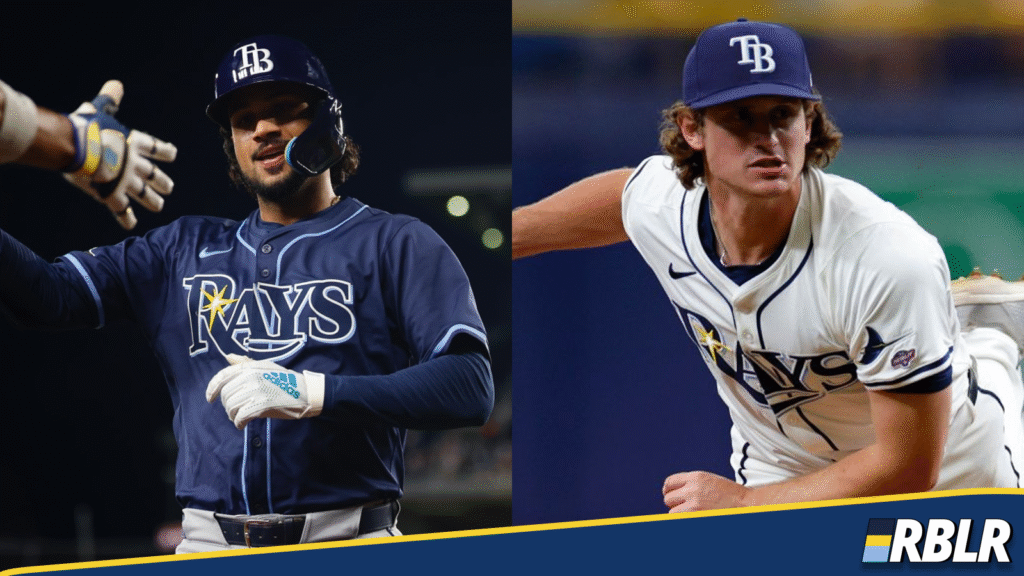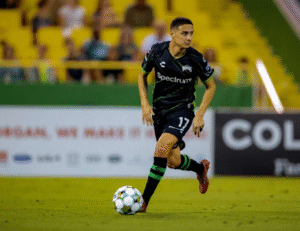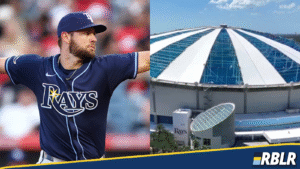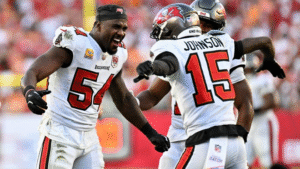RBLR Rays Roundtable #31 – Sights Set on ’26

This week our writers looked at what Everson Pereira could provide going forward, and they also examined the 2025 season for a couple key contributors who are expected to be part of the core next year.
Jacob Macauley (@raysfarmreport) : Let Pereira play
After a difficult stretch of dropping six of their last eight, the Rays sit in a position where they need to figure out what they have in some of their players heading into 2026.
The outfield group seems like the murkiest of the groups the Rays have; a group that lands 26th in baseball in wRC+ and 24th in FanGraphs defensive metric. Underperformance from Josh Lowe and Christopher Morel has really hurt, and the overexposure of Simpson and Mangum due to the Jonny DeLuca and Richie Palacios injuries has hurt as well.
Although it’s been a pretty difficult start to his major league career, Everson Pereira is definitely a piece that looks to feature next season. On the surface, the major league results are ugly – posting a 37 wRC+ and 39.3% K% in his first 56 plate appearances.
So why should he feature on next year’s roster? The minor league track record is still very strong (career 127 wRC+), and in the small sample size at the major league level, he’s running plus swing decisions: (20% O-Swing% 95th percentile, and 64.8% Z-Swing% 45th percentile). Pereira hasn’t shown his power off in MLB, but ran a 50% hard hit% (90th ML percentile) in AAA, has double-plus bat speed, and landed in the 80th percentile in the international league in ISO this season.
There is still a lot of in-zone swing and miss (25.3% 1st percentile) that long term might hold him back entirely, but it’s evident he still has immense talent given the MiLB track record and should get some reps down the stretch to play his way in or out of next year’s team.
Dustin Teuton (u/FLBoy19) : Key names in 2026
With the Rays slowly losing ground in the Wild Card chase, it would take a significant collapse from Boston, Houston, or Seattle for them to sneak in. With that in mind, it makes sense to look forward to 2026. The Rays’ roster by then will hardly resemble the 2023 squad: only Brandon Lowe, Josh Lowe, Yandy, McClanahan, Rasmussen, Kevin Kelly, Cleavinger, Pete Fairbanks, and a short debut from Junior Caminero remain. The 2026 team will be built on young players or guys with only a couple years of service time who need to continue improving.
Mason Montgomery has been better than the casual Rays fan realizes. His batted-ball luck has been brutal, with a .384 BABIP and just a 65.6% strand rate. Even so, he’s managed a 3.93 FIP and 3.57 xFIP, inflated mostly by his 12.9% walk rate. His 30.1% SO rate is elite, supported by a 96th percentile whiff rate and 83rd percentile chase rate. The stuff clearly works; it’s the command that lags. Pete Fairbanks is the example—wild early in his career, torched by high BABIPs, then refined into one of baseball’s best relievers by 2022. If Montgomery can sharpen his command possibly we could see his changeup that once dominated MiLB hitters, he has the pieces to be a frontline reliever.
Junior Caminero blew past even my own expectations. I thought he’d put up 2–3.5 fWAR, but instead he turned in a 4.0 fWAR season with 44 homers. Power will likely dip some at Tropicana, but he’s a 25% better-than-league-average bat. More encouraging was his defensive growth—after a rough two months at third, he settled into being league average. For Junior, the focus now is the standard young-hitter improvements: refining pitch recognition and proving he can consistently handle MLB velocity, where he hit just .257 with a 28.3% strikeout rate on fastballs 95+.
Carson Williams’ debut has gone about as expected: strikeout rate north of 30% and plenty of struggles against MLB pitching. But the Rays knew this when they promoted him—for his defense first, with the bat being a work in progress. He chases too much and whiffs at an unsustainable 39% clip, but the raw power is real. When pitchers miss, he punishes them, and with his current HR rate he’d project to 20+ over a full season. Carson has also struggled with above average velocity as he has zero hits on fastballs over 95 MPH. But in general Carson has struggled to hit MLB fastballs with a .182 average. Carson doesn’t even turn 23 until next June, so there’s time for the offensive game to grow. Even if he never fully figures it out, the combination of his glove and his power still makes him a valuable above-average starter.
The RBLR Rays Roundtable is a weekly collection of analysis, insight, and perspectives from a cast of writers assembled because of their unique backgrounds and experience. Check this space weekly for new updates and features covering the Tampa Bay Rays, the Rays’ minor league prospects, and more!







